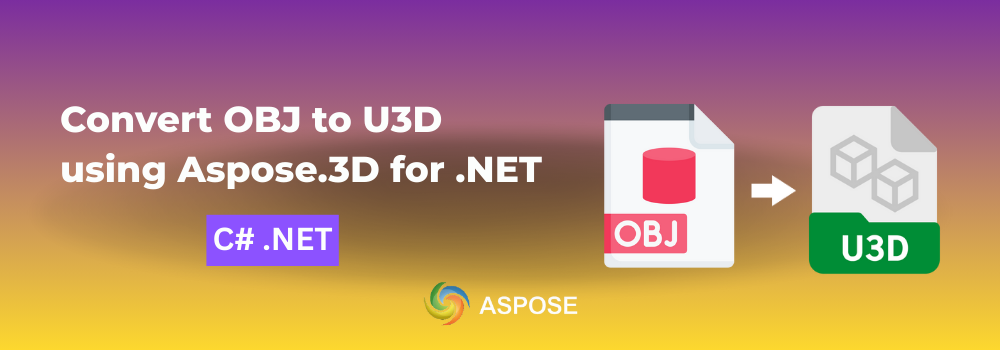This guide is for you if you are looking to accelerate the conversion of 3D file formats in .NET programmatically. In this blog post, we will run through how to build an OBJ to U3D converter in C# by writing a few lines of code. For that purpose, we will use Aspose.3D for .NET as it is one of the most advanced 3D rendering SDKs available. In fact, you can go beyond 3D file format conversions, such as 3D file processing, reading, writing, and more.
Install 3D Rendering SDK
This .NET SDK does not depend on any third-party library and offers a very simple installation. So, let’s install Aspose.3D for .NET by downloading the DLL file or you may run the following command in NuGet Package Manager:
Install-Package Aspose.3D
Build an OBJ to U3D Converter in C# - Code Snippet
You will notice that the implementation is quite easy and straightforward. Nothing complex, just a few method invocations, and you are good to go.
Let’s walk through the steps first.
- Create an object of the Scene class.
- Invoke the Open method to load the Source OBJ file.
- Initialize an instance of the U3dSaveOptions class to access the options for exporting the scene as a U3D file.
- The Save method will save the output file in U3D file format.
The following code sample shows how to build an OBJ to U3D in C#:
Output:
Get a Free License
Get a free temporary license to try this 3D rendering SDK without evaluation limitations.
Ask a question
Please visit our forum to ask questions.
Wrapping up
Aspose.3D for .NET is an excellent choice for .NET developers. It supports multiple 3D file formats such as 3DS, PLY, STP, and more. So, we have gone through how to build an OBJ to U3D in C#. However, you may extend the scope of your tool as per your needs. There are many features offered by this 3D rendering SDK. Therefore, don’t forget to visit the documentation and API references. These resources will give you further insights.
Review our GitHub Examples
Visit our GitHub to see our implementations.
